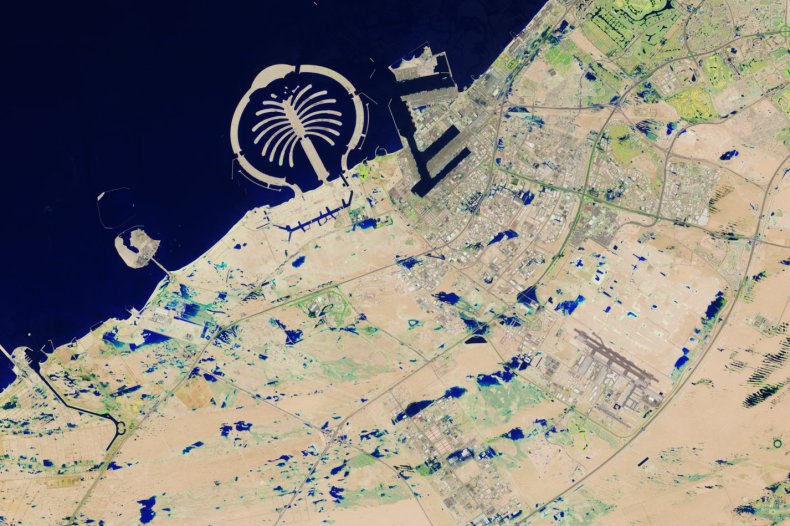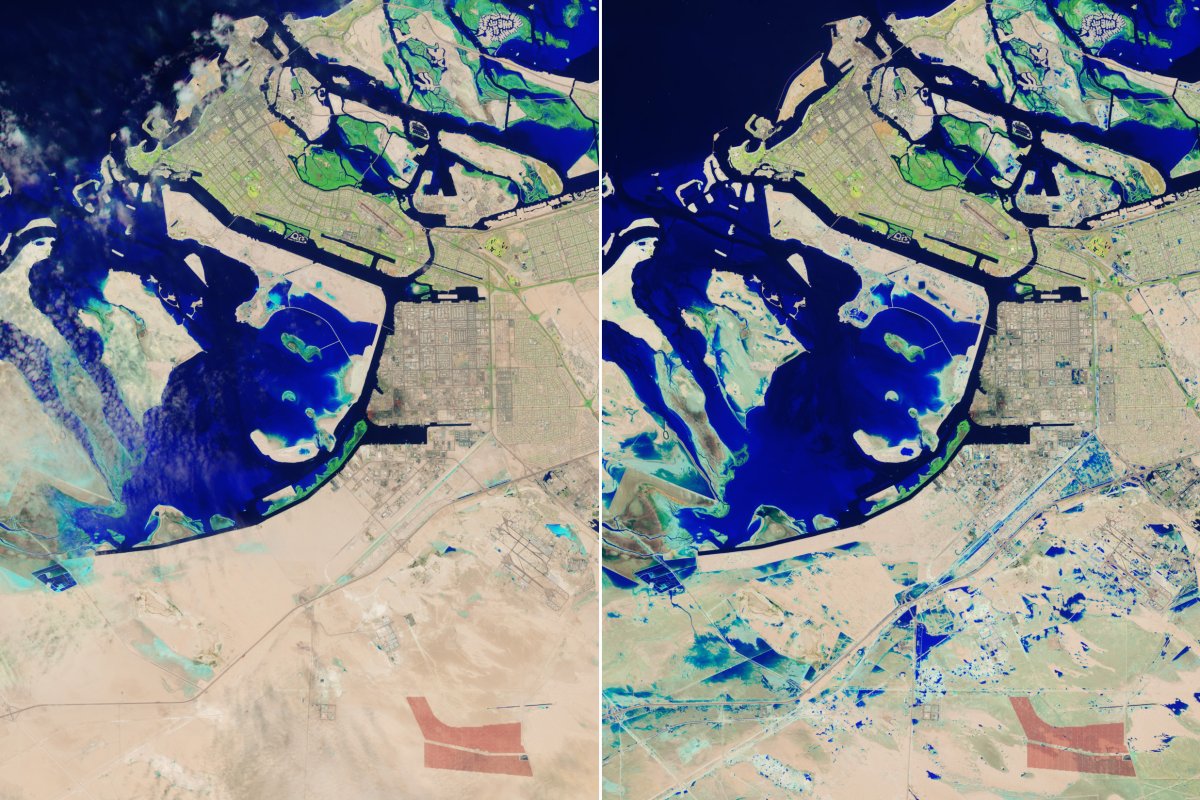Severe flooding in the United Arab Emirates (UAE) has been captured in before-and-after satellite photos shared by the NASA Earth Observatory.
A year's worth of rain descended on parts of the UAE in just a few days last week, causing severe flash flooding and disruption to transportation and roads.
Heavy rain in neighboring Oman triggered flash flooding that left more than a dozen people dead, authorities said, including 10 children who were swept away in a vehicle.
Images captured by the Landsat 9 Earth observation satellite show how bad the flooding was in the UAE on April 19. One image shows Jebel Ali, a town southwest of Dubai, completely dry on April 3, compared with a landscape dotted with floodwater on April 19. There was flooding to the south of the town's port and areas near Palm Jebel Ali, the NASA Earth Observatory reported.



The UAE's capital, Abu Dhabi, was also severely affected by the storms. Satellite images show the city and its surrounding area completely dry on April 3, compared with April 19 when flooding can be seen over the major thoroughfare Sheikh Zayed Road, which runs from Dubai to the capital. Many more patches of flooding can be seen across residential areas in satellite images.
The storms, which were caused by several low pressure systems, first hit Oman on April 14 before moving through the UAE bringing torrential rainfall.

Dubai City alone saw about a year's worth of rain in just 24 hours on April 15, more than 5 inches. Dubai airport saw over 4 inches of rain fall on April 16, the NASA Earth Observatory reported. Flights were temporarily stopped during the severe weather, causing widespread disruption.
Eastern parts of the UAE saw 10 inches of rain in less than 24 hours. Such amounts are extremely rare in the Emirates, which generally only receive about 5.5. to 8 inches of rain in a year.
The worst of the storms are now over, although parts of the country are still experiencing disruption.
The rain was so unusual that some concerns were raised around the role of cloud seeding. Although there is no evidence to suggest that this practice caused the rainfall, the UAE does have an active cloud seeding initiative which specifically looks to increase precipitation in the country. The practice involves inserting chemicals into the atmosphere that increase condensation and as a result, rainfall.
However it is more likely that the type of extreme weather seen last week is being caused by climate change, which has increased the number of storms being seen across the globe.
Recent research showed that the number of named storms in the U.S. is set to be above average this year.
Do you have a tip on a science story that Newsweek should be covering? Do you have a question about the UAE floods? Let us know via science@newsweek.com.
Uncommon Knowledge
Newsweek is committed to challenging conventional wisdom and finding connections in the search for common ground.
Newsweek is committed to challenging conventional wisdom and finding connections in the search for common ground.
About the writer
Robyn White is a Newsweek Nature Reporter based in London, UK. Her focus is reporting on wildlife, science and the ... Read more
To read how Newsweek uses AI as a newsroom tool, Click here.








